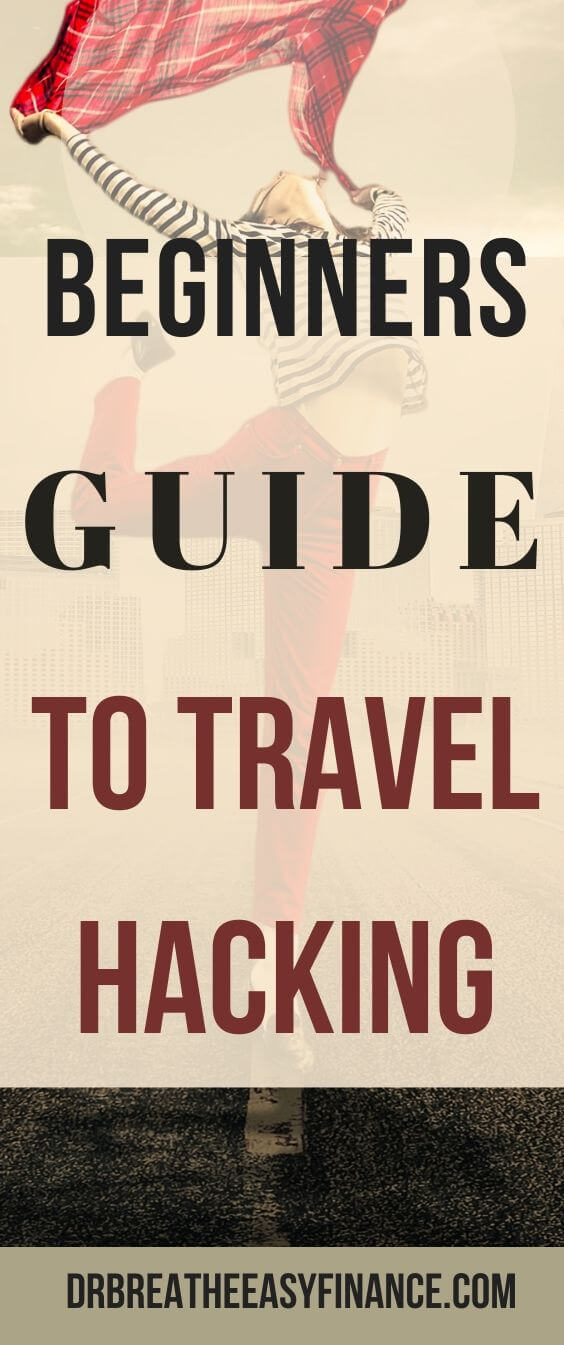With all the talk of a pending recession, saving some money on your next vacation is likely even more top of mind than usual. Luckily, there’s a solution out there to help you save money while still enjoying your next vacation! The answer is called travel hacking.
Travel hacking is just a fancy term that entails using existing systems to your advantage to get discounted and free airfare, hotels, car rentals, and other travel expenses. So you can get your next vacation on the house!
Below, we’ll highlight the six steps to travel hacking that any beginner can use to get started – yes, even during a recession.
Table of Contents
What is Travel Hacking?
As briefly mentioned, travel hacking is the process of using existing systems to travel on a discount or for free.
That’s a little broad, though. More specifically, it involves taking advantage of programs such as:
- Airline miles programs
- Hotel rewards programs
- Credit card rewards
- Credit card sign-up bonuses
- And more
So, for example, you sign up for an airline miles program and use the rewards from that program to get free flights. That’s the essence of travel hacking.
By signing up for and utilizing these programs, you can score some sweet deals, and we’ll highlight all of that and more in the six steps to travel hacking below.
6 Steps to Travel Hacking
For beginners, there are six steps that you need to know to start travel hacking. You can get started on steps 1-4 today pretty easily, and then steps 5-6 are ongoing steps that you will use over and over again as you get more familiar with travel hacking.
Once you get these six steps down, you can start to look to maximize your points and miles, but for now, we’re focusing on the 80/20 principle and the basics to get started. You can worry about eeking out every possible dollar from travel hacking later down the road.
Step 1: Sign Up For Airline Rewards Programs
First things first, you need to sign up for an airline rewards program.
It’s best to pick one airline that you can frequently fly from your home airport. Signing up is the easy part, but accumulating miles takes time. When you spread yourself across a few airlines, you spread those miles across various airline programs as well (typically, you cannot combine miles from different airlines).
Sticking with one airline when possible is the best way to accumulate miles fast.
The largest airlines in North America are below, in case it helps narrow down your selection:
- American Airlines
- Delta Airlines
- Southwest Airlines
- United Airlines
- Air Canada
- Alaska Airlines
- JetBlue Airways
- Spirit Airlines
Of course, you can also wait until you go to book your next flight before signing up. That way, you make sure you sign up for the airline you will use.
Step 2: Sign Up For Hotel Rewards Programs
Similar to airline miles, hotel points are best when accumulated with one hotel brand. Try to sign up for one and stick with it where you can.
Luckily, most hotel loyalty programs are at the corporate level and cover a wide variety of hotel chains. For example, Marriott hotels encompass a few familiar hotel chains:
- Marriott
- JW Marriott
- The Ritz Carlton
- Sheraton
- Westin
- Courtyard
- Fairfield
- aloft
- And more
A big hotel chain like Marriott has close to every major city covered in the US. There are a few other large hotel companies that you can consider signing up for that will have similar coverage to Marriott:
- Wyndham
- Hilton
- IHG
- Hyatt
Just like airlines, you can always wait to sign up for a program when you book your next hotel. Sometimes, they offer deals for new members of their loyalty programs that you can take advantage of too.
Step 3: Research Credit Cards
The most important (and most beneficial) step to travel hacking is researching credit cards.
Every credit card will have its advantages, but there is no doubt that some are better than others. Especially when you consider all of the perks that credit cards could offer, including:
- Sign up bonuses (usually bigger with premium credit cards)
- Cashback or point rewards
- Fraud protection
- Purchase protection
- No foreign transaction fees
- TSA pre-check
- Free checked bags when flying
- etc
One massive difference between credit cards lies within their cashback and points programs. While many will offer a standard 1% or 1.5% cash back (or point) reward, just as many other cards provide specific rewards for certain categories of spending, like groceries or travel. This matters a lot for consumers like you!
If you spend a lot on groceries, you want a credit card with generous grocery rewards. Similarly, if you spend heavily on travel, you’ll want a card that rewards travel spending.
You should do your research to understand which credit card offers the best point rewards program, and other perks, for you. If you need some help with the investigation, you can use this calculator to find the best credit card for you based on your past spending habits.
Pro tip: Open a credit card with the hotel or airline you signed up with above, and you could accelerate the rewards you would get.
Step 4: Get Your First Credit Card
Once you’ve researched and selected your first credit card, it’s time to apply.
Before doing so, check your credit score to ensure your score is high enough to get approved for the card you selected. If it is, you should have no problem getting approved.
Once you have the first card, you should:
- Spend enough money in the introductory period to get the sign-up bonus
- Then, wait a few (3-6) months
Usually, the sign-up bonus details will sound something like “spend $3,000 in the first three months to get 50,000 bonus points.”
While $3,000 is a ton of money, it’s something you want to do, because 50,000 points is a ton of points! Even if you don’t spend this much money naturally, there are ways to move up typical expenses so that you qualify for the bonus within the specified time. Some common strategies include:
- Pre-paying for an annual gym membership (rather than monthly)
- Buying a lot of shelf-stable groceries
- Pre-paying for insurance (car, home, life, or other insurance)
- Etc.
The last thing you want to do is go on a shopping spree to get the bonus! It’s better to cover it with ordinary expenses, if possible.
Step 5: Use Your Points and Reward Programs!
Once you’ve gotten your credit card bonus and accumulated some points over the first 3-6 months, you can consider using your points and rewards!
It depends on how big of a trip you want to plan.
A sign-up bonus can likely cover a couple of domestic round trip tickets, but if you want to cover an entire vacation, you might need to wait 6+ months to earn enough credit card points.
For example, I took a 5-day trip to Arizona (from Chicago) and got my flights and hotel covered with 74,534 Chase Ultimate Rewards Points. That’s a little more than the typical 50,000-60,000 point sign-up bonus that Chase offers with it’s Sapphire cards.
The other factor at play here is that you likely have not accumulated any hotel points or miles at this point. Steps 1 and 2 above got you started, but you need to take a trip for that to happen.
So, it’s up to you if you want to:
- Book a shorter trip immediately, or
- Wait a few extra months to accumulate more points and book a more extensive trip
Step 6: Get a New Credit Card Every 6 Months
To continue travel hacking, you should look to get a new credit card about every six months. This is not an exact number of months you need to follow, but it’s a reasonable guideline.
There are a few details within Step 6 that are important for beginners to get right:
Get New Sign-Up Bonuses: Earning everyday credit card points is excellent, but they come at a much slower pace than sign-up bonuses.
Sticking with our example above, you could earn 50,000 points when you spend $3,000 with a sign-up bonus. That’s over 16 points per dollar spent!
With ongoing rewards, you’ll likely earn points at a 2% cashback rate (at best). This is just an average, but it would only equate to 2 points per dollar spent.
Getting a sign-up bonus provides an 8x better reward than your typical, ongoing credit card rewards. This is why so many “expert travel hackers” are continuously opening new credit cards.
Don’t Hurt Your Credit Score: The vital balance to strike with opening credit cards is not to damage your credit score. Opening a new credit card will result in a hard credit check on your credit score, which will send your score in a negative direction.
That said, with responsible use of credit cards (and other loans), your score should bounce back to normal within a few months. The hard credit check only results in a short-term negative impact.
Waiting ~6 months between opening cards give your score time to rebound and not take too much damage. Plus, it allows you to make sure you can get the sign-up bonus with every card that you open.
Said otherwise, opening five credit cards in one day is not advised!
Don’t Pay an Annual Fee Twice: Lastly, when opening credit cards with annual fees, it’s usually worth putting a calendar reminder on your phone (or wherever you put calendar reminders) for 330 days later (just under a year) to close out the card.
Likely, by this time, you would have attained and used the sign-up bonus, and closing the card before a year means you won’t have to pay the annual fee again.
Closing cards can affect your credit score in two ways:
- It will lower your credit limit and increase your credit utilization
- It will change your length of credit history if it’s your first card
The first bullet is hard to avoid. You’ll want to ensure your credit utilization does not spike too high by closing this one card.
The second bullet is avoidable by having your first card you ever open be a card with no annual fee. This way, you never have to worry about closing it, and you will be able to keep your length of credit history intact.

Summary: Intro to Travel Hacking
Travel hacking can be an easy and effective way to travel for free when you know the steps to take:
- Sign Up For Airline Rewards Programs
- Sign Up For Hotel Rewards Programs
- Research Credit Cards
- Get Your First Credit Card
- Use Your Points and Reward Programs!
- Get a New Credit Card Every 6 Months
So go ahead and get started with steps 1-4 today! You’ll be traveling for free before you know it.
This article originally appeared on The Money Mix and has been republished with permission.
Kevin @ Just Start Investing
Kevin runs the personal finance website Just Start Investing, where he focuses on making investing easy. Just Start Investing has been featured on US News & World Report and Chime Bank, among other major publications for his easy-to-follow writing. Check out Just Start Investing to learn the simple strategies to start investing today, as well as ways to optimize your credit cards, banking and budget.








Leave a Reply